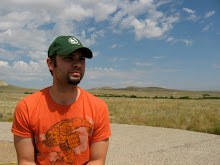
The Multiversity is a seven-issue series of one-shots, written by Grant Morrison, that will establish seven different Earths from throughout the Multiverse. These seven issues, while telling separate stories, will link together to reestablish the connection between the DCU and the Multiverse.
Well, it all sounds very interesting and certainly (to me at least) more fun than a regular issue of, say, Teen Titans. But Morrison isn't the first to use the term, and I'm trying to figure out if there is any connection.
George Fallis, a very smart guy and you should look him up, published a book in 2007 called Multiversities, Ideas, and Democracy. For precision, I'll quote the publisher's description:
Multiversities are sprawling conglomerates that provide liberal undergraduate, graduate, and professional education. As well-springs of innovation and ideas, these universities represent the core of society's research enterprise. Multiversities, Ideas, and Democracy forcibly argues that, in the contemporary world, multiversities need to be conceptualized in a new way, that is, not just as places of teaching and research, but also as fundamental institutions of democracy.
The "multiversity," a term coined by Clark Kerr I think, replaces the university as the term that defines the post-secondary institution. Fallis describes the multiversity as an institution that evolved out of a mix of several ideas. The economic forces that shape so-called higher education and the historical tenets of the liberal education and the very idea of knowledge for its own sake all get involved here, and it's quite an interesting book.
Now, how does DC's multiverse fit into this? I'm not sure. Fallis's multiversity is an institution that encompasses a broad range of interests, and is shaped by a broad range of influences. Sounds a little like the DCU, but only a little. I don't think that trying to find direct analogies is going to do much good. I could be wrong, though.
A far more tangential, but also more interesting, idea is that Morrison intends, like Fallis does with the university, to look at the problems that have accumulated around the concept of DC's super-heroes. In the second section of his book, Fallis argues that the preeminence of postmodern thought will lead to a relativism that threatens the university's core values of reason and democracy. This is where Morrison's project might relate: Fallis sees the conflict over the future of the university as a battle of ideas.

Morrison is interested in the importance of alternate versions of DC characters. Why? Well, partly it's a battle of ideas. Any multiverse project seems like a questioning of the tenets of the validity of an idea. Or, more specifically a narrative. And Morrison loves doing that. One such narrative, summed up quite succinctly in All-Star Superman #1 is Superman's origin: "Doomed Planet. Desperate Scientist. Last Hope. Kindly Couple." When you imagine a Kal-El who wasn't raised by the Kents, or who didn't come to Earth, or who isn't the last of Kryptonian, you are telling an alternate story. This alternate story cannot help but interrogate the Superman narrative. What is essential? What is the value of the original? Most of DC's Elseworlds projects are based around a single high concept (What if Bruce Wayne's parents didn't die?), but they question what is fundamental about the myths and narratives that shape DC's super-heroes. Morrison's multiverse project would participate in a similar interrogation of DC's mythic narratives.

I think that Morrison's project is engaged in a deeper kind of interrogation than, say "What if Superman's rocket had landed in Communist Russia?" In part, he's trying to prove that DC's super-heroes can be commercially successful outside the market forces that have determined that only those series directly related to the Next Big Event. He's trying to prove, basically, that a Captain Marvel book can sell. Sure, Morrison is asking what makes Captain Marvel interesting, but he's also trying to provide an alternative to the story that, sure, Captain Marvel is interesting, but no one will buy his comic. To paraphrase Fallis, the problem with DC's publishing strategy is that it does not question, it blindly follow the directions of seemingly overwhelming global forces. I hope Morrison is interested in changing that.
 would be interesting to pick up the most recent issue of Wonder Woman to see how it reflects her thinking on the issue ten years later (Really? Ten years?).
would be interesting to pick up the most recent issue of Wonder Woman to see how it reflects her thinking on the issue ten years later (Really? Ten years?).



 it
it
